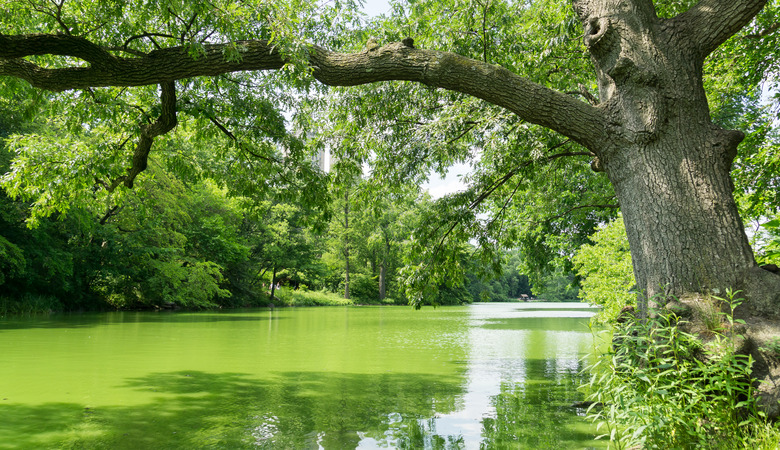Is Algae A Decomposer, A Scavenger Or A Producer?
Algae are not plants, animals or fungi. They belong to Kingdom Protista, a diverse group of single-celled eukaryotes. Protists have their own kingdom because many species share some characteristics of plants, animals or fungi. Algae belong to the group of plant-like protists. They are autotrophs that fulfill the role of producer in ecosystems because they make their own food via photosynthesis, like plants.
TL;DR (Too Long; Didn't Read)
Algae are single-celled, plant-like organisms. They are producers because they make their own food through photosynthesis.
Decomposers and Scavengers in Ecosystems
Decomposers and Scavengers in Ecosystems
Ecosystems require a balance of energy to function. Energy in a food web flows from producers to consumers to decomposers. Consumers and decomposers are heterotrophs. They cannot make their own food and must eat other organisms to obtain energy. Decomposers consume organic materials from dead plants and animals, break them down chemically into simpler molecules and return the molecules to the environment. Plants and other producers such as algae use these nutrients, which include carbon, nitrogen and minerals. Organisms that act as decomposers include fungi, bacteria and other microbes. Scavengers eat dead animals and are also considered consumers. They assist in the first stage of the decomposition process by tearing apart the remains of other organisms, allowing decomposers greater access to the tissues.
The Role of Algae
The Role of Algae
Producers like algae form the basis of energy in a food web. Algae convert light energy from the sun into sugars through the process of photosynthesis. Heterotrophs at all trophic levels of a food web rely on the chemical energy produced by autotrophs. Primary consumers eat algae and in turn are eaten by secondary consumers, which may then be eaten by tertiary consumers. Some of the energy stored in an organism is passed on to consumers. Without the energy in the form of carbohydrates produced by algae, there would be no energy available for consumers, including scavengers and decomposers.
Types of Algae
Types of Algae
Most algae live in aquatic environments. Microalgae, such as phytoplankton, float in the water or cover lake bottoms, river beds or the ocean floor. Macroalgae form multicellular colonies that make up more complex organisms such as kelp or sea lettuce. The three broad categories of algae are green algae, brown algae and red algae. Green algae share a common ancestor with plants and typically live in coastal habitats. Most species of red algae are marine. The pigment that gives red algae species their color allows them to photosynthesize in deeper water where less sunlight is available. Brown algae, such as giant kelp, grow into the largest algal structures, reaching 100 meters in length. They use a different form of chlorophyll than green or red algae to photosynthesize.
Cite This Article
MLA
Mentzer, A.P.. "Is Algae A Decomposer, A Scavenger Or A Producer?" sciencing.com, https://www.sciencing.com/algae-decomposer-scavenger-producer-7792844/. 23 May 2018.
APA
Mentzer, A.P.. (2018, May 23). Is Algae A Decomposer, A Scavenger Or A Producer?. sciencing.com. Retrieved from https://www.sciencing.com/algae-decomposer-scavenger-producer-7792844/
Chicago
Mentzer, A.P.. Is Algae A Decomposer, A Scavenger Or A Producer? last modified March 24, 2022. https://www.sciencing.com/algae-decomposer-scavenger-producer-7792844/
